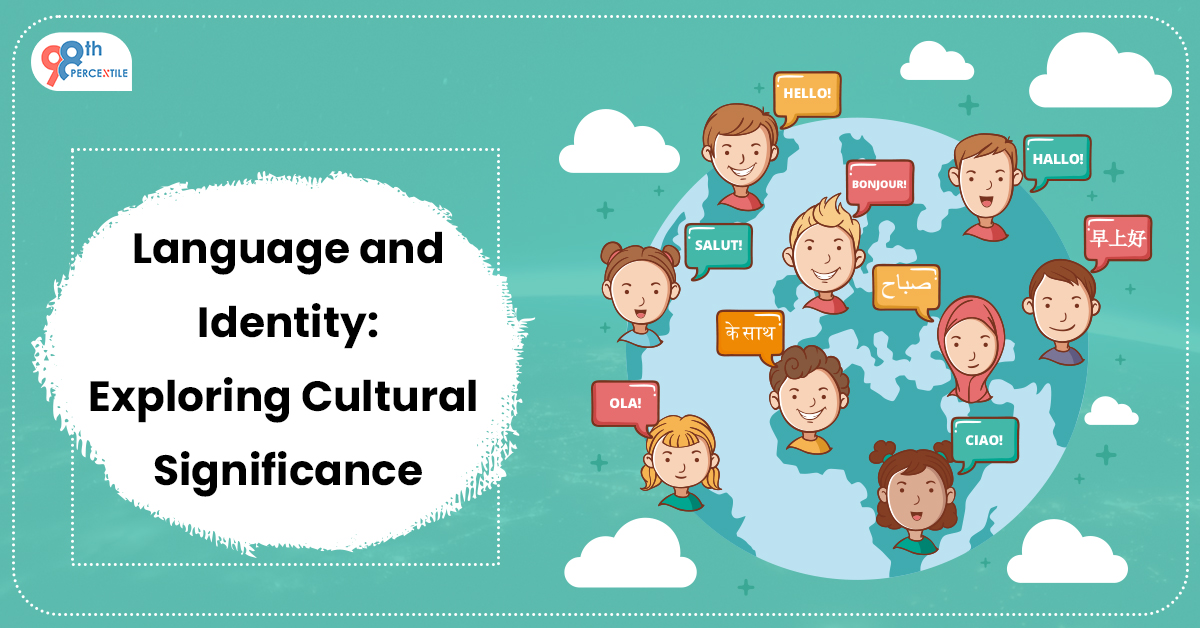Language is a powerful tool that not only allows individuals to communicate, but also shapes individual and community identities within a cultural context. The complicated relationship between language and identity has been thoroughly studied, revealing how language reflects, reinforces, and even produces cultural meaning. This article delves into the complex link between language and identity, concentrating on how linguistic features, linguistic relativity, language loss, and language revival contribute to the study of cultural significance.
How Language and Identity plays a major role
Accents, dialects, and lexicon are linguistic characteristics that indicate cultural identity. One's accent, for example, may quickly reveal their geographical or ethnic origin, indicating the relationship between language and identity. Dialects, on the other hand, may reflect not just geographical distinctions, but also social status and historical influences. For example, the disparity between British and American English is more than just vocabulary and pronunciation; it reflects historical and cultural differences between the two countries.
Register Now for Online Summer Camp
Moreover, language plays a pivotal role in the construction and reinforcement of cultural identities. Communities frequently create similar language patterns that distinguish them from others and provide a sense of belonging. The employment of distinct terminologies and idiomatic phrases within a linguistic group strengthens their shared experiences, resulting in a strong relationship that molds their identity. Because of their strong interaction with their environment, the Inuit people use many phrases to describe different types of snow. This language diversity reflects their distinctive cultural outlook.
The Sapir-Whorf hypothesis, often known as linguistic relativity, focuses on the complicated relationship between language and identity. This theory asserts that a language's structure and vocabulary may shape and influence how its speakers see and think about the world. In essence, language impacts cognition, which in turn shapes society norms and actions. Languages, for example, that distinguish between singular and plural gender pronouns may influence how societies perceive and treat gender roles and identities.
However, when looking at the issue of language loss, the cultural significance of language is underscored even more. Globalization, urbanization, and political influences frequently lead to the extinction of indigenous languages in favor of dominant ones. This loss is more than just linguistic; it also threatens cultural heritage and identity. When a language disappears, so does a complete way of perceiving and engaging with the world, as well as the unique tales and worldviews that language carries. Language loss can cause emotions of exile and cultural disintegration because persons and communities lose a crucial part of their identity.
Yet language revival efforts demonstrate the continued relevance of language in sustaining and regenerating cultural identities. Communities and governments understand that language revitalization is critical to preserving cultural variety and improving the collective human experience. Educational programs, documentation, and cultural events that promote the use of endangered languages are all part of initiatives to resuscitate them. For example, the Maori language in New Zealand has experienced a resurgence through policies that promote its use in education, media, and everyday communication.
To summarize, language and identity have a mutually beneficial relationship that includes linguistic features, linguistic relativity, language loss, and language revival. Language is more than simply a way to communicate; it reflects cultural values, historical contexts, and social dynamics. Individuals' speech patterns, vocabulary, and accents are all tied to their personal and social identities. The Sapir-Whorf hypothesis focuses on how language influences cognitive processes and cultural norms. Furthermore, the loss of a language represents a severe erosion of cultural identity, whereas language revival efforts show the long-term importance of linguistic heritage. Understanding and maintaining the link between language and identity is essential for promoting cultural diversity and global understanding.
Book 2-Week English Trial Classes Now!

 Students/Staff
Students/Staff Parents
Parents ElevatEd
ElevatEd



-Nov-18-2025-03-57-47-3267-AM.png?width=360&length=360&name=401x226%20(6)-Nov-18-2025-03-57-47-3267-AM.png)



-Jul-22-2025-03-16-52-8797-AM.png?width=360&length=360&name=401x226%20(6)-Jul-22-2025-03-16-52-8797-AM.png)






